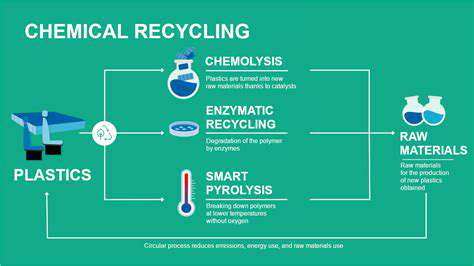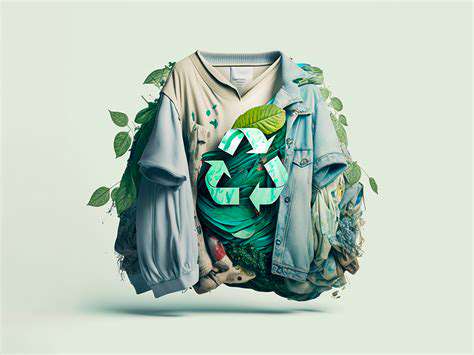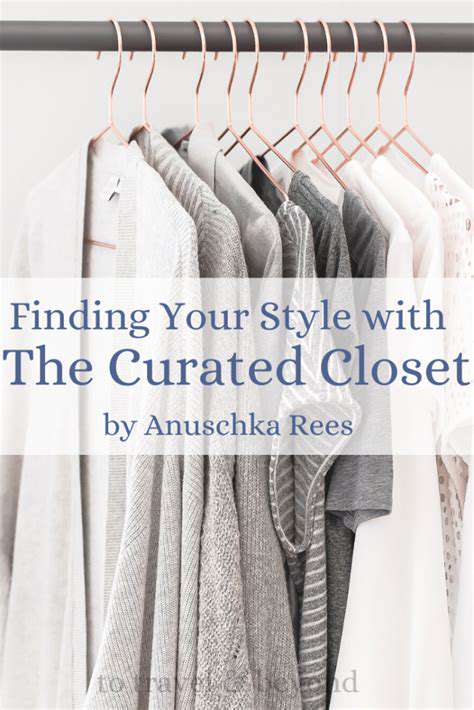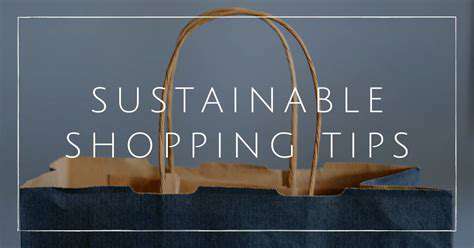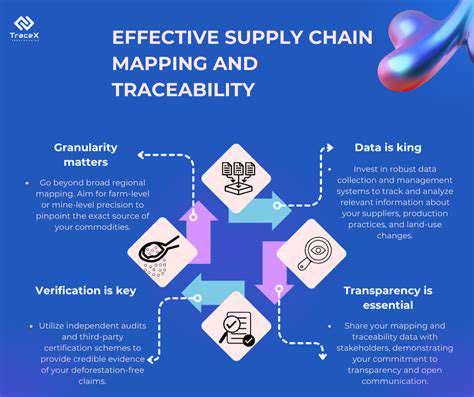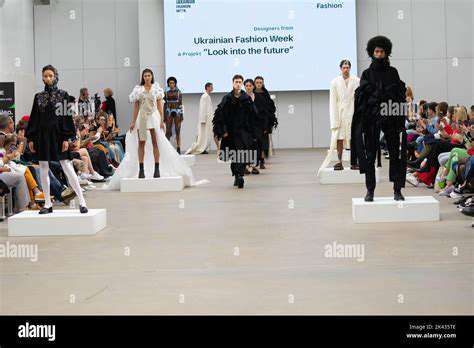Designing for Longevity: The Heart of Circular Fashion
Sustainable Style Choices
Moving beyond the fleeting trends of fast fashion requires a conscious shift in our approach to clothing. Instead of chasing the latest styles, which often come at the expense of environmental sustainability and ethical labor practices, we should prioritize pieces that are durable, versatile, and reflect our individual taste. This involves investing in high-quality materials, understanding the production process, and choosing garments that can be worn for seasons, even years, to come. A well-constructed, timeless piece can serve as the foundation of a wardrobe that evolves with you, rather than one that quickly becomes outdated and ends up in a landfill.
Considering the environmental impact of our clothing choices is crucial. The production of fast fashion often involves significant water and energy consumption, as well as the use of harmful chemicals. By opting for sustainable alternatives, we can lessen our footprint on the planet. This means looking for clothing made from recycled or organic materials, supporting brands committed to ethical labor practices, and choosing garments designed for longevity rather than disposability. These conscious decisions contribute to a more sustainable fashion industry, one that prioritizes the well-being of both people and the planet.
Investing in Quality Over Quantity
A wardrobe built on enduring style is one that prioritizes quality over quantity. Instead of accumulating a large number of cheaply made garments that quickly fall apart, focus on purchasing fewer, well-made pieces that can be mixed and matched to create a diverse range of outfits. This approach not only saves money in the long run but also reduces textile waste and promotes a more mindful relationship with fashion.
When investing in quality, consider the craftsmanship, the materials used, and the overall design. Look for garments that are built to last, with durable stitching, strong fabrics, and thoughtful details. These elements contribute to the longevity of the garment, ensuring that it can withstand daily wear and tear for years to come. Investing in quality is an investment in yourself, your style, and the planet.
By understanding the importance of quality materials and construction, we can contribute to a more sustainable future. This approach fosters a more mindful consumption pattern, reducing the environmental impact of the fashion industry, and encourages a more intentional relationship with clothing.
Choosing quality over quantity also fosters a sense of appreciation for your wardrobe. With fewer pieces, you're more likely to appreciate each item and discover new ways to style them, leading to a more creative and fulfilling approach to fashion.

While broad appeal can be tempting, specializing in a particular pet photography style can significantly boost your brand recognition and attract a dedicated clientele. Are you drawn to capturing candid moments of dogs playing in the park, or perhaps the meticulous detail of a cat's facial expressions? Do you prefer a classic, traditional approach or a more modern, artistic style? Defining your niche style is about identifying what makes your work stand out from the competition. It's about finding what you're passionate about and letting that passion shine through your images.
Repurposing and Upcycling: Giving New Life to Existing Garments
Repurposing Basics: Understanding the Concept
Repurposing and upcycling garments involves transforming existing clothing items into something new and useful. This goes beyond simple alterations and instead embraces creativity and innovation to give pre-loved garments a second life. It's a sustainable practice that reduces textile waste and promotes mindful consumption. By examining the materials and construction of a garment, we can discover unique potential for repurposing.
The core idea is to extract value from existing fabrics and designs, thereby extending their lifespan and minimizing environmental impact. This approach is crucial in a world grappling with the increasing problem of textile waste. Understanding the process allows us to engage with our wardrobes in a more conscious and resourceful way.
Creative Design Inspirations
There's a wealth of creative design inspiration available when repurposing garments. From transforming old t-shirts into bags or pillowcases to turning vintage dresses into patchwork quilts, the possibilities are endless. Exploring online resources, attending workshops, and connecting with other creative individuals can spark new ideas and techniques.
Look to fashion history and current design trends for inspiration. Understanding different garment constructions and fabric types can guide your creative process. Repurposing old clothes allows you to experiment with diverse styles and textures without the financial burden of new purchases.
Innovative Techniques and Tools
A range of techniques and tools can help in the repurposing process. Basic sewing skills are often helpful, but many projects can be achieved with simpler methods like patching, layering, or deconstruction. Understanding how to mend, cut, and reshape fabrics is key to successful repurposing. Specialized tools like sewing machines, fabric scissors, and seam rippers can streamline the process.
Experimentation is key to discovering new techniques that work for you. Online tutorials and how-to videos provide valuable guidance and inspiration for various repurposing projects.
The Environmental Benefits of Repurposing
Repurposing and upcycling garments contribute significantly to a more sustainable fashion industry. By extending the lifespan of existing garments, we reduce textile waste, conserve natural resources, and lessen the environmental impact of manufacturing new clothing. This approach supports a circular economy, where materials are reused and recycled.
Choosing repurposed items over newly manufactured ones reduces the demand for resources like water, energy, and raw materials, ultimately lessening the overall environmental footprint of fashion.
Considerations for Choosing the Right Garment
When selecting garments for repurposing, consider the quality and condition of the fabric. Look for garments made from durable materials that are still in good condition. The design of the garment, its patterns, and any embellishments can also influence the repurposing process and the final outcome.
Assessing the potential for repurposing requires careful evaluation. Consider the intended use of the garment after repurposing and whether its existing features align with the desired result. This can help to avoid unnecessary waste and ensure the repurposed item meets your needs.
Repurposing for Specific Projects
Repurposing can be tailored to various projects, from fashion accessories to home décor. Old jeans can be transformed into stylish bags or wallets. T-shirts can be creatively reimagined as patchwork quilts or unique tote bags. The possibilities are truly endless, depending on your creativity and desired outcome.
Repurposing and the Future of Fashion
Repurposing and upcycling are increasingly important in the evolving fashion industry. As awareness of environmental issues grows, consumers are actively seeking sustainable and eco-friendly alternatives to fast fashion. Repurposing offers a path towards a more circular and mindful approach to clothing consumption.
This practice encourages a shift in mindset, encouraging us to view clothing as more than just disposable items. Instead, it promotes a culture of creativity, resourcefulness, and respect for the environment.

